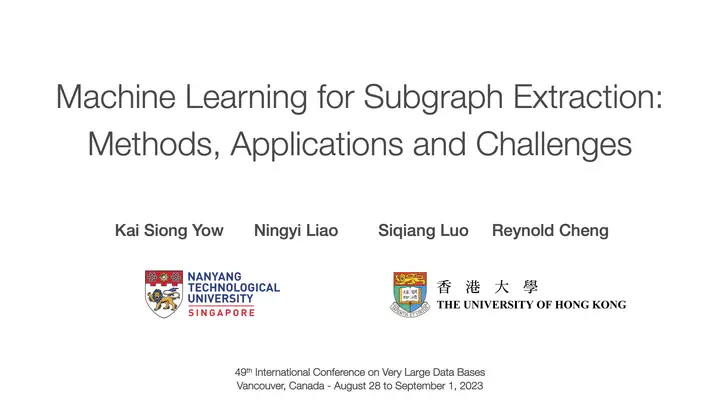Machine Learning for Subgraph Extraction: Methods, Applications and Challenges – Community Detection & Maximum Common Subgraph

Subgraphs are obtained by extracting a subset of vertices and a sub- set of edges from the associated original graphs, and many graph properties are known to be inherited by subgraphs. Subgraphs can be applied in many areas such as social networks, recommender systems, biochemistry and fraud discovery. Researchers from various communities have paid a great deal of attention to investigate numerous subgraph problems, by proposing algorithms that mainly extract important structures of a given graph. There are however some limitations that should be addressed, with regard to the efficiency, effectiveness and scalability of these traditional algorithms. As a consequence, machine learning techniques—one of the most latest trends—have recently been employed in the data- base community to address various subgraph problems considering that they have been shown to be beneficial in dealing with graph- related problems. We discuss learning-based approaches for four well known subgraph problems in this tutorial, namely subgraph isomorphism, maximum common subgraph, community detection and community search problems. We give a general description of each proposed model, and analyse its design and performance. To allow further investigations on relevant subgraph problems, we suggest some potential future directions in this area. We believe that this work can be used as one of the primary resources, for researchers who intend to develop learning models in solving problems that are closely related to subgraphs.